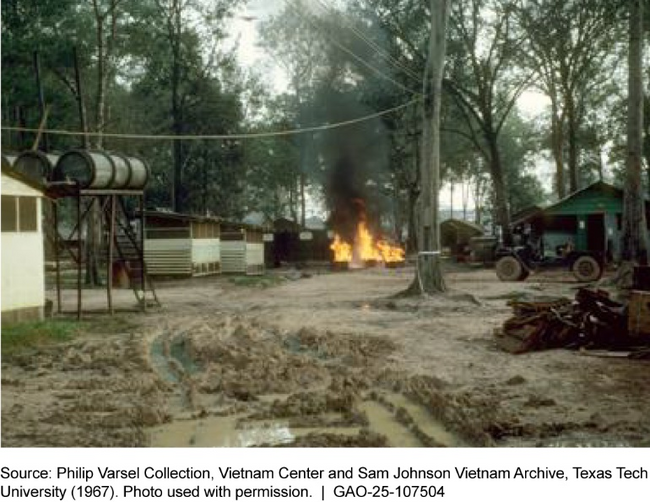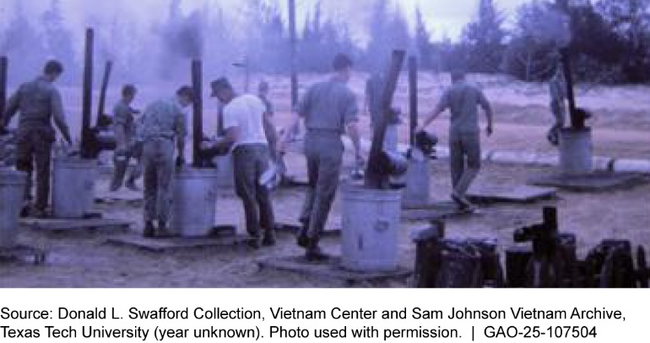Veterans Health: Information About Veterans’ Exposure to Open-Air Burning in Vietnam
Fast Facts
Burning waste outside emits toxins into the air that can be harmful. The military burned waste in Vietnam. Many worry that the toxins released have led to long-term health problems.
The Department of Veterans Affairs hasn’t researched whether there is a link between Vietnam veterans’ health issues and exposure. VA’s reviews of available data haven’t indicated that exposure was a major contributor.
VA said additional data—e.g., the extent of veterans’ exposure—would be needed to research health effects, but such data doesn’t exist. Researchers could collect some information, but it would be challenging and limited by veterans’ recollections.

Highlights
Why This Matters
Open-air burning emits toxins that can be harmful. The U.S. military’s use of open-air burning in certain operations since 1990 is well documented. Federal law granted presumptive coverage for specified conditions to veterans of these operations due to their exposures, simplifying the disability claims process. However, little has been reported about open-air burning during the Vietnam War.
GAO Key Takeaways
Military archives we reviewed and a nongeneralizable sample of 145 veterans we interviewed, who served in Vietnam from 1964 to 1975, indicate that the military commonly used open-air burning to dispose of waste. Nearly all (90 percent) of these veterans cited concerns about their exposure.
As of May 2025, the Department of Veterans Affairs’ Veterans Health Administration (VHA) has not specifically researched whether there is any association between veterans’ health effects and exposure to open-air burning in Vietnam. Historically, research on health effects from exposures that occurred in Vietnam has focused on herbicide use (such as Agent Orange). VHA officials said their ongoing reviews of available information have not indicated that exposure to open-air burning was a major contributor to Vietnam veterans’ long-term health.
Officials also said additional data that would be needed to inform research, such as data on the extent to which veterans were exposed to open-air burning, are not available. Thus, VHA would need to collect self-reported data from Vietnam veterans on their exposure to inform any future needed research. Officials cautioned that this would be limited by recall bias, or veterans’ potentially inaccurate recollection of past events, among other challenges.
Burnout Latrines in Vietnam. Accelerants Were Used to Burn Human Waste in 55-gallon Drums. (1967)

How GAO Did This Study
We reviewed military archives from the Vietnam War and interviewed a nongeneralizable sample of 145 veterans who reported exposure to open-air burning in Vietnam. We also reviewed relevant VHA documents and spoke with VHA officials and other agencies about researching health effects related to open-air burning.
Service Members in Vietnam Burn a Range of Waste in 55-gallon Drums Called Burn Barrels. (Year Unknown)

For more information, contact Alyssa M. Hundrup at hundrupa@gao.gov.
